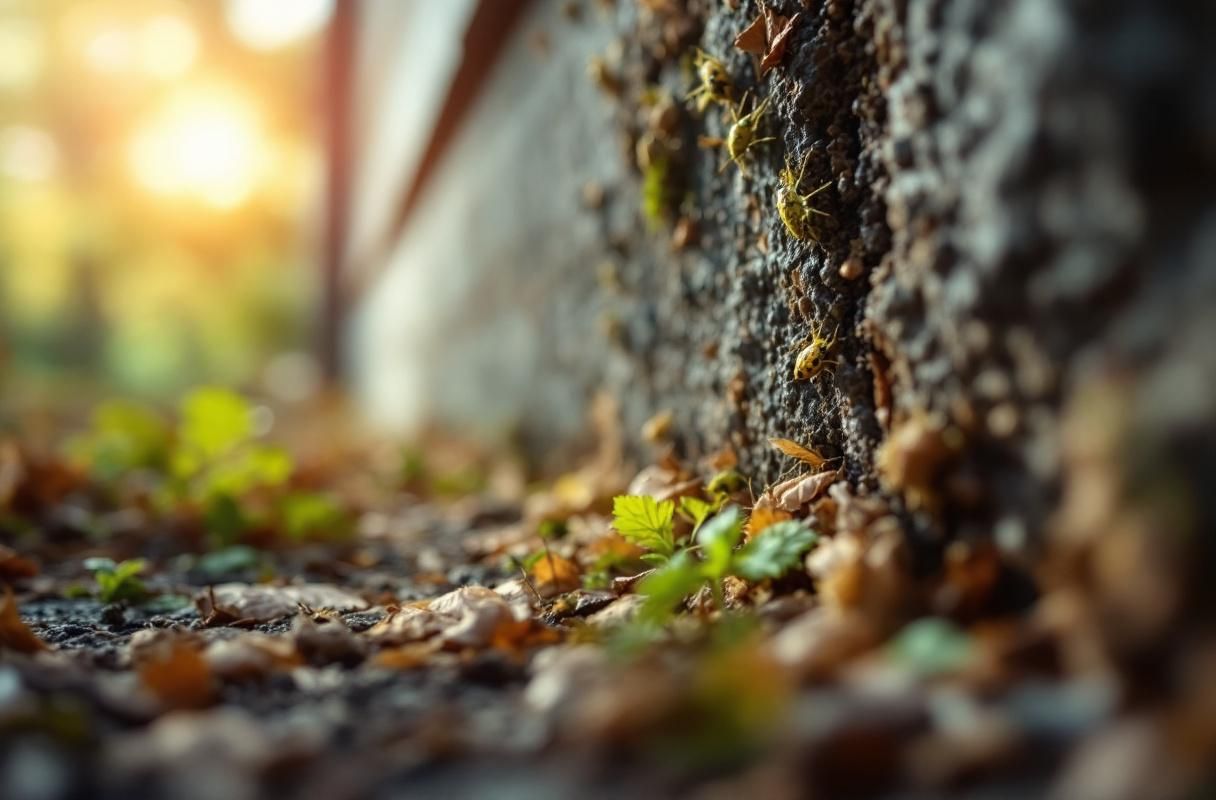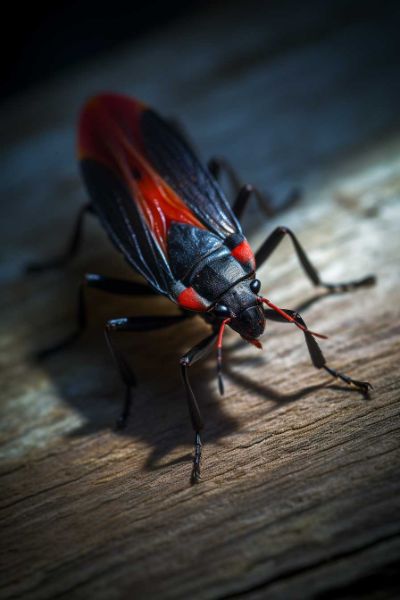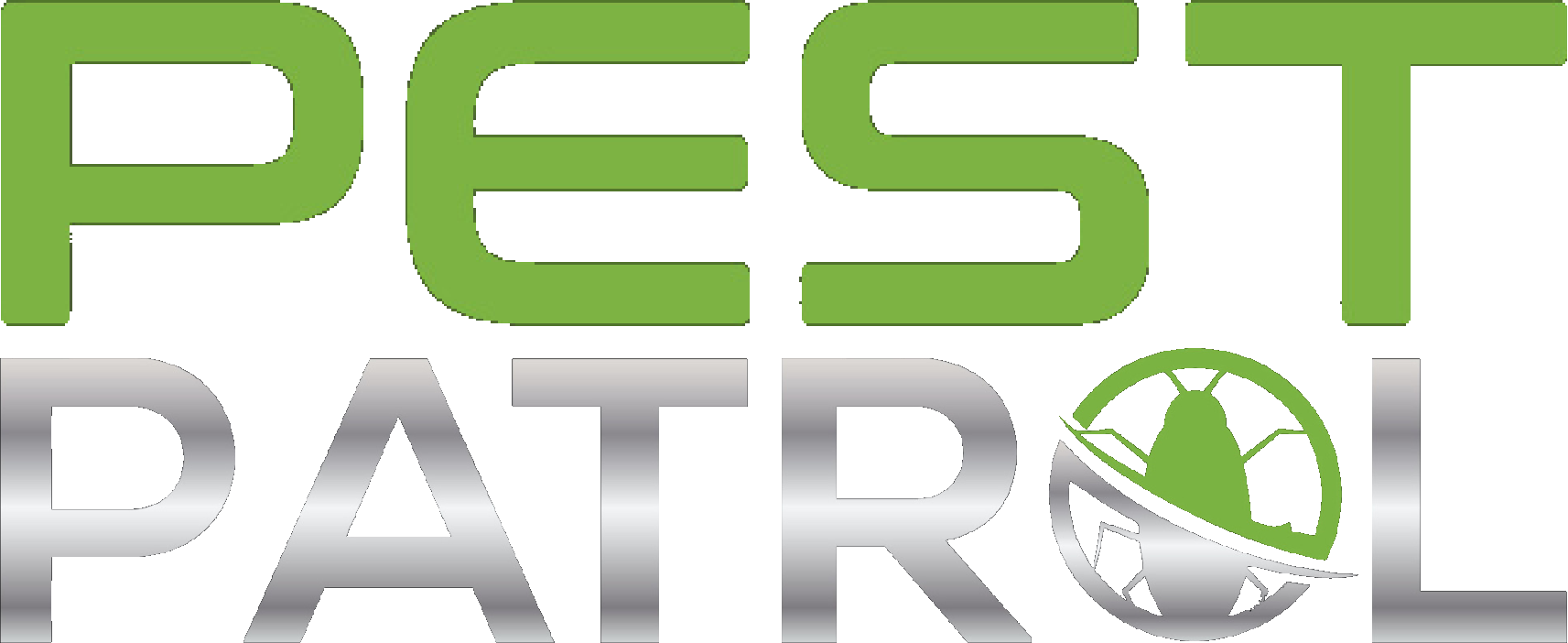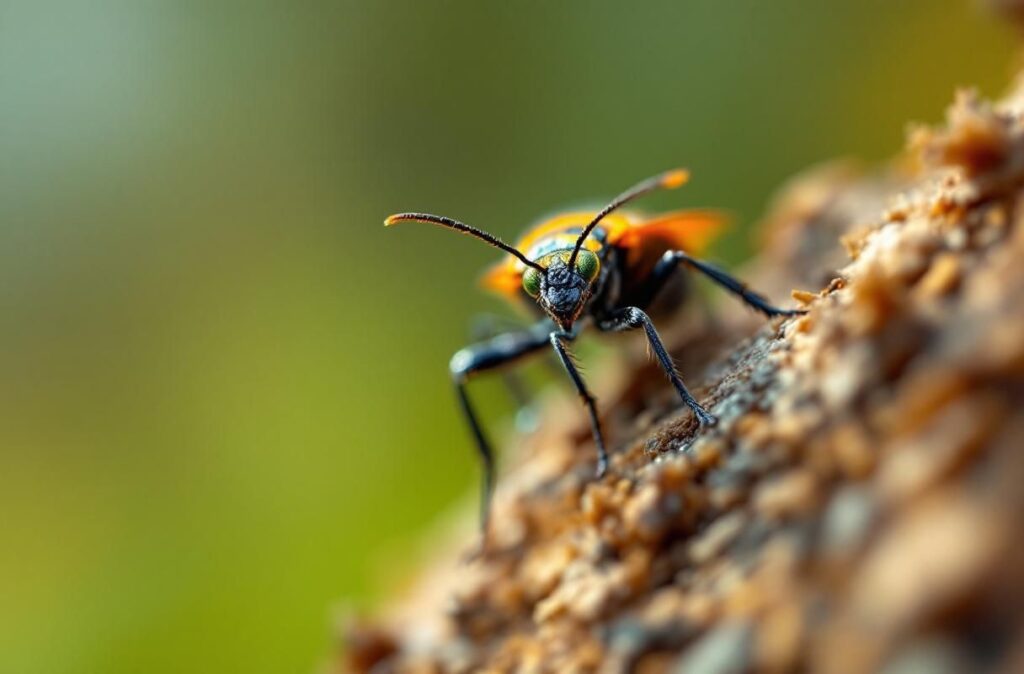As the seasons change, so do the challenges of keeping boxelder bugs at bay. Cooler weather and the life cycle of boxelder bugs drive these insects toward warm structures, turning otherwise peaceful commercial properties and storefronts into hotspots for nuisance infestations. This article explores the top 7 effective methods for boxelder bugs pest control to ensure your home or business remains pest-free in 2025.
Preventing boxelder bugs requires a strategic mix of exclusion, habitat management, targeted removal, and seasonal planning. The guidance below combines field-tested techniques, safe product recommendations, and practical inspection workflows tailored for property owners and managers who need reliable, low-risk outcomes.
1. Seal Entry Points to Prevent Infiltration

Proactively sealing access points is one of the most reliable measures for preventing boxelder bugs from entering structures. These insects exploit tiny gaps around windows, doors, siding, utility penetrations, and rooflines to gain access. Implementing durable sealing solutions reduces the frequency of recurring infestations and lowers long-term control costs.
A systematic exterior and interior inspection should be part of routine property maintenance. Use high-quality exterior caulk for gaps under trim, foam backer rod for wider voids, and adhesive-backed weather stripping around operable doors. Focus on areas that receive direct sunlight in autumn, as boxelder bugs are drawn to warm, sunlit walls and may cluster around nearby seams and crevices.
Identify Common Entry Areas
- Inspect windows and door thresholds for worn seals and gaps.
- Check siding joints, foundation vents, and attic eaves for openings that permit insect entry.
- Examine where utility lines, cables, and pipes penetrate exterior walls.
Seal Techniques and Materials
- Use silicone or polyurethane exterior caulk for flexible, long-lasting seals on trim and small cracks.
- Install closed-cell foam weather stripping on doors and replace old thresholds to eliminate under-door gaps.
- Employ expandable foam for irregular voids, then over-seal with caulk or trim to prevent UV degradation.
Inspection Schedule and Documentation
- Perform a comprehensive inspection during early autumn to preempt overwintering behavior.
- Create a simple checklist for maintenance teams that documents sealed areas and materials used.
- Track recurring entry points so you can upgrade materials or methods where simple repairs fail to stop infiltration.
2. Implement Natural Pest Remedies for a Chemical-Free Home
Many commercial property managers and homeowners prefer natural pest remedies to reduce chemical exposure for occupants while achieving meaningful control. Essential oils such as peppermint and cinnamon have documented repellent properties against a variety of nuisance insects and can be incorporated into sprays or distributed as saturated cotton wicks in entry zones. Natural approaches are best used as part of an integrated strategy rather than a sole solution when heavy pressure is present.
DIY sprays based on insecticidal soap, neem oil, or diluted essential oils can reduce boxelder bug activity on exterior surfaces and entry pathways. These formulations are low-toxicity, degrade quickly in sunlight, and can be applied more frequently than many synthetic insecticides. When using natural sprays, apply to targeted perimeter zones and sunny walls where boxelder bugs congregate and avoid overuse on foliage that could harm beneficial insects.
Essential Oils and Their Application
- Peppermint oil is commonly used at low concentrations as a repellent; combine with a surfactant for effective mixing in water.
- Cinnamon oil and clove oil show repellent activity and can be blended into a balanced spray formulation.
- Use undiluted oils sparingly and always dilute according to safe cosmetic or household guidelines to avoid staining or plant damage.
DIY Spray Recipes and Use Tips
- Mix insecticidal soap with water and a small amount of neem oil for a contact spray to reduce populations on sunny surfaces.
- Combine a few drops of peppermint oil with a neutral detergent and water, and apply to siding, window frames, and entry gaps.
- Reapply after heavy rain and during peak aggregation periods in autumn and early spring.
Limitations and Best Practices
- Natural remedies are less effective for large, established infestations and should be combined with exclusion and mechanical removal.
- Avoid indiscriminate spraying of vegetation that supports beneficial insects, and test small areas to ensure no staining occurs.
- Document applications and monitor treated zones to measure efficacy and determine when supplementary measures are needed.
3. Utilize Boxelder Bug Traps for Effective Removal
Trapping is a direct removal tactic that can reduce visible populations quickly and provide monitoring data on infestation levels. Sticky traps and baited units placed strategically near entry points, sunny walls, and around boxelder or maple trees help capture adult insects before they move indoors. Traps are a low-chemical option that integrates well with exclusion and habitat management.
Trap placement and bait selection are key variables for success. Use sturdy adhesive traps along baseboards, near doorways, or externally on ledges and eaves where clustering occurs. For external traps, consider light-attractant or pheromone-style attractants designed for nuisance Hemiptera, though many owners find that simple yellow sticky traps and traps positioned in sunny spots outperform unbaited units.
Types of Traps and Placement Strategies
- Sticky trap panels placed perpendicular to the wall capture insects that attempt to climb into crevices.
- Light-based traps may work at night for some aggregating species but are less reliable than sun-warmed surface traps during daytime activity.
- Use traps along rooflines, entry thresholds, and directly below evident aggregations on exterior walls.
Baiting and Attractants
- Use commercially available sticky trap bait strips when specified for Hemiptera; these can increase capture rates when combined with visual placement.
- Consider using small amounts of ripe boxelder seed clusters or sap-mimicking attractants in outdoor traps to mimic natural host cues.
- Replace traps regularly and log catch counts to guide follow-up actions and seasonal readiness.
Monitoring and Safe Disposal
- Check traps weekly and remove numerous captures before they dry and stain surfaces when crushed.
- Dispose of used traps in sealed bags to prevent accidental spread or staining in waste streams.
- Use trap catch data to escalate to targeted insecticide treatment only when mechanical measures are insufficient.
4. Maintain a Clean Outdoor Environment
Outdoor pest management is foundational to successful long-term control of boxelder bugs. These insects rely on seed-producing trees, leaf litter, and sheltered debris as habitats and food sources. By routinely clearing debris, reducing clutter, and maintaining landscape structure, property managers can remove the environmental cues that attract boxelder bugs and lower local population pressure.
Active landscape maintenance includes reducing nearby boxelder and female maple seed sources when feasible, removing leaf litter and fallen seeds, and pruning branches that touch buildings. Creating a clean perimeter around structures and ensuring adequate sunlight and airflow at wall bases reduces the microhabitats boxelder bugs use to rest and overwinter.
Yard Maintenance Practices
- Regularly rake and remove accumulated leaf litter, especially around foundations and under planting beds.
- Collect and remove fallen seeds from boxelder and maple trees during peak seed-drop periods to reduce food sources.
- Store woodpiles and construction materials off the ground and away from exterior walls to prevent harboring.
Vegetation Management and Tree Trimming
- Trim branches that contact roofs, gutters, or siding to create a physical separation that inhibits insect access.
- Evaluate the species composition of trees on the property and prioritize removal or replacement of female boxelder trees near high-traffic buildings.
- Maintain low groundcover near foundations to improve visibility and reduce shelter for overwintering adults.
Benefits of Proactive Outdoor Work
- Reducing outdoor population density leads to fewer insects seeking overwintering sites indoors.
- Clean perimeters also simplify inspections and make exclusion repairs more effective.
- Regular maintenance integrates with seasonal pest control planning to reduce reactive pesticide use.
5. Monitor for Seasonal Changes and Prepare Accordingly
Understanding seasonal pest behavior is essential for timely and effective boxelder bugs pest control. Boxelder bugs are most active in late summer through autumn when adults seek warm sites to overwinter; they may emerge in spring to feed and mate on host trees. Anticipatory monitoring and action in early autumn can prevent large aggregations from establishing on or in commercial buildings.
A seasonal monitoring calendar that aligns inspections, exclusion projects, and treatment windows helps property owners apply controls when they have the greatest preventive impact. Visual inspections, trap checks, and recording weather patterns that influence bug movement will allow property managers to scale interventions and allocate pest control budgets efficiently.
Peak Activity and Timing
- Watch for increased outdoor congregations on warm, sunny walls during late summer and autumn as a signal to intensify exclusion efforts.
- Conduct perimeter inspections before major temperature drops to intercept adults seeking overwintering sites.
- Resume targeted monitoring in early spring to catch any survivors and prevent establishment during the breeding cycle.
Seasonal Checklist for Property Managers
- Inspect exterior seals and weather stripping at the beginning of autumn and after winter storms.
- Deploy traps in late summer and monitor capture trends to inform the need for supplemental measures.
- Schedule outdoor cleanup and tree maintenance during seed-drop windows to reduce food and shelter availability.
Data-Driven Decision Making
- Track trap counts and inspection findings over multiple seasons to identify patterns and high-risk areas.
- Use seasonal data to plan professional treatments during highest-impact windows rather than relying on reactive strategies.
- Implement simple reporting procedures so maintenance staff can escalate issues before infestations escalate.

6. Use Insecticides Wisely and Safely
Targeted insecticide use remains an important tool for controlling heavy boxelder bug infestations when exclusion, mechanical removal, and natural remedies are insufficient. Selecting products labeled for boxelder bugs and applying them precisely to high-contact exterior zones reduces unnecessary exposure to people, pets, and beneficial insects. Insecticides should be integrated into an overall pest control plan and used according to label directions.
Residual pyrethroid formulations, such as synthetic pyrethrins or professional-grade pyrethroids, are commonly effective for treating cracks and crevices where adults cluster. Contact sprays based on insecticidal soap or pyrethrins can quickly knock down visible populations. Always follow label restrictions for indoor versus outdoor use, personal protective equipment, and reentry times to minimize liability and health risks.
Choosing the Right Products
- Select insecticides specifically labeled for nuisance Hemiptera and for the intended treatment site (exterior siding, foundation cracks, or interior cracks and crevices).
- Prefer targeted crack-and-crevice formulations and dusts for void treatments rather than broad broadcast sprays.
- Consider microencapsulated or long-residual products where warranted to prolong protection on sun-exposed surfaces.
Application Best Practices
- Treat only when monitoring indicates elevated activity and target the treatment to aggregations and typical entry points.
- Avoid spraying flowering plants and shrubs to protect pollinators and beneficial predators.
- Use a licensed applicator for complex structural treatments or when legal compliance for commercial properties is required.
Safety, Compliance, and Environmental Considerations
- Read and follow all label directions; label compliance is a legal requirement and ensures effective, safe use.
- Provide occupant notifications and take precautions in sensitive areas such as food-service properties and medical facilities.
- Employ integrated pest management principles to limit insecticide volumes and frequency while maximizing efficacy.
7. Consult Professional Pest Control Experts When Needed
Professional pest control experts provide technical assessment, calibrated treatments, and integrated strategies for persistent or large-scale boxelder bug problems. When infestations persist despite exclusion and mechanical efforts, or when commercial liability requires documented control, engaging a licensed pest management professional ensures safe, regulatory-compliant interventions. Professionals also bring the tools and experience necessary for treatments in hard-to-reach voids, attics, and complex building envelopes.
A professional assessment identifies contributing site factors, recommends a prioritized action plan, and documents treatments and monitoring steps for business records. Pest control companies can offer scheduled preventive services that align with seasonal pest dynamics, ensuring an ongoing reduction of pressure and quicker response to new aggregation events. For owners of multi-site operations or high-visibility properties, outsourced expertise saves time and reduces risk.
When to Escalate to a Professional
- Persistent indoor sightings after reasonable exclusion and mechanical removal efforts indicate the need for specialized inspection.
- Large commercial properties, food-service locations, and healthcare facilities often require professional oversight for compliance and occupant safety.
- Structural issues, such as attic infestations or hidden void populations, are best handled by trained technicians with appropriate equipment.
What to Expect From a Professional Service
- A documented inspection report that highlights entry points, infestation hotspots, and recommended corrective actions.
- Targeted treatments matched to site conditions, including perimeter residuals, void treatments, and follow-up monitoring.
- Recommendations for landscape modifications, building repairs, and scheduled maintenance to prevent recurrence.
Selecting and Managing a Pest Control Partner
- Choose licensed providers with verifiable references and clear documentation of chemicals, safety protocols, and warranty terms.
- Establish a service agreement that defines treatment thresholds, monitoring frequency, and communication protocols.
- Request before-and-after documentation and a plan for transitioning from reactive to preventive maintenance.
If you’re ready to implement these boxelder bug pest control strategies for your business, Pest Patrol is here to help. Our services include tailored inspections, exclusion repairs, targeted treatments, and ongoing seasonal monitoring designed for commercial needs. Visit our website or contact us today to schedule an assessment and learn how our services can protect your property and keep operations running smoothly.


